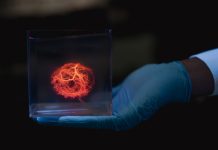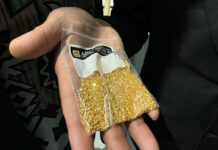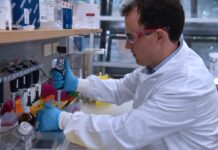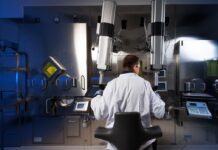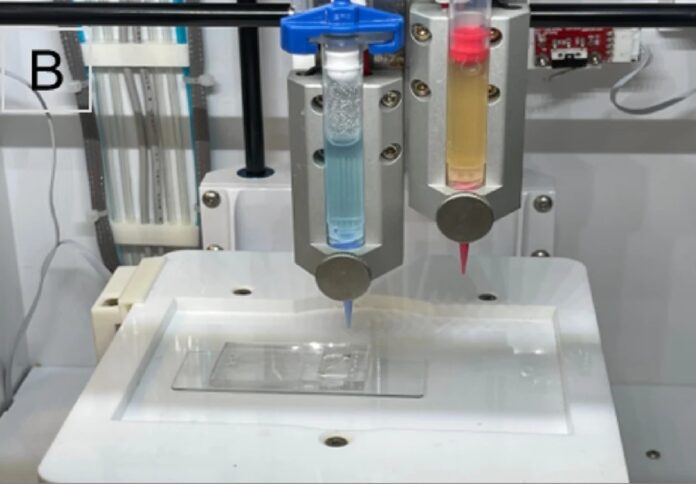
An international research team from the University of Waterloo has developed an innovative method that combines advanced bioprinting technologies with synthetic structures, such as microfluidic chips, to enhance 3D modelling of complex cancers.
This technique will assist laboratory researchers in gaining a more precise comprehension of heterogeneous tumours, which are characterised by the presence of multiple types of cancer cells, frequently arranged in unpredictable configurations.
Nafiseh Moghimi, an applied mathematics post-doctoral researcher and the lead author of the study, explained that, traditionally, physicians used to biopsy a patient’s tumour, extract cells, and then cultivate them in flat petri dishes in a laboratory for fifty years.
It was only about a decade ago that scientists recognised that a two-dimensional model was inadequate in representing the actual structure of tumours within the human body, owing to repeated treatment failures in clinical trials.
The University of Waterloo team has addressed this challenge by creating a 3D model that not only accurately represents the complexity of a tumour but also simulates its surrounding environment.
The research, conducted in the Mathematical Medicine Lab under the guidance of applied mathematics professor Mohammad Kohandel, combines advancements from various disciplines to pioneer a novel approach in Canada.
“We are creating something that is very, very new in Canada. Maybe just a couple of labs are doing something even close to this research,” Moghimi commented.
In particular, the team first developed polymer microfluidic chips, which are miniature structures etched with channels that mimic the flow of blood and other fluids around a patient’s tumour.
Multiple types of cancer cells were grown and suspended in a customized bioink. This bioink, a combination of gelatin, alginate, and other nutrients, is specifically designed to sustain the cell cultures.
The team used an extrusion bioprinter, a device resembling a 3D printer but for organic material, to layer the different types of cancer cells onto the prepared microfluidic chips.
The result is a living, three-dimensional model of complex cancers that scientists can use to test various treatment methods, including different chemotherapy drugs.
The research team is particularly focused on creating complex models of breast cancer, the most commonly diagnosed cancer in women after skin cancer.
Breast cancer presents unique challenges in treatment due to its appearance as complex tumours containing multiple cell types when it metastasizes.
Relying on cells from one or two biopsies to represent an entire tumour can lead to ineffective treatment plans and poor outcomes.
The 3D-printed tumour models represent a significant leap forward in the field of cancer research, offering new hope for the development of faster, less expensive, and less painful treatments, especially for conditions like late-stage breast cancer.
The research, titled, “Controlled tumour heterogeneity in a co-culture system by 3D bio-printed tumor-on-chip model,” has been published in the prestigious journal Nature, marking a milestone in the advancement of cancer research and treatment.


